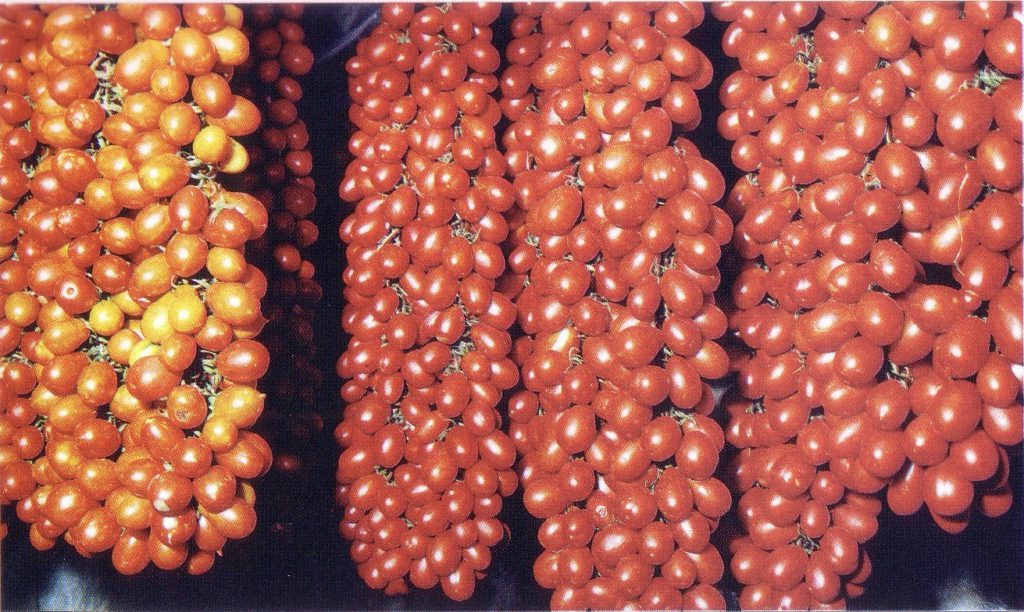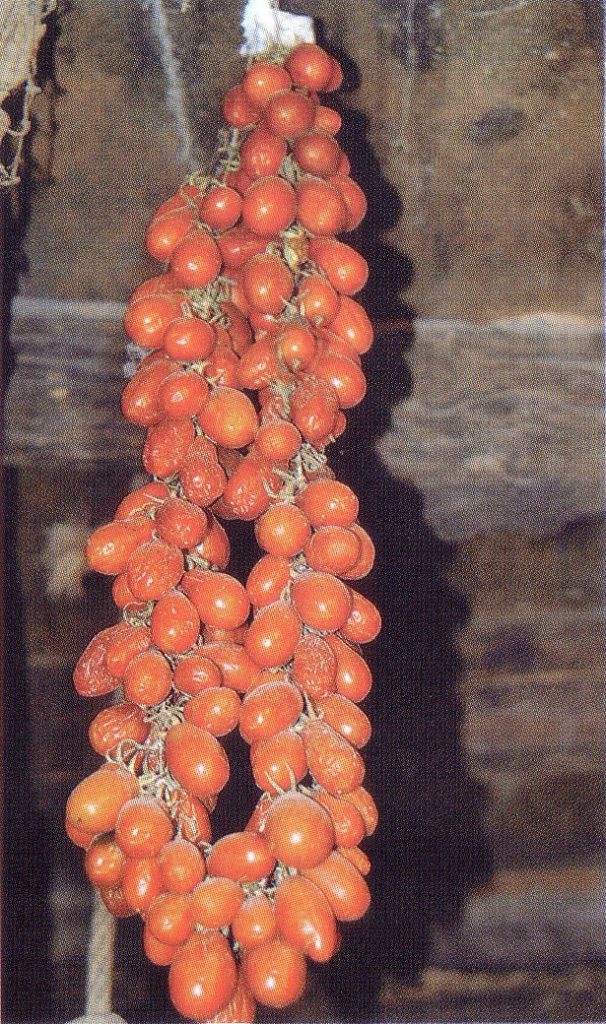The “Autonomous” Tomato of Roccavaldina
In Roccavaldina, there exists a tomato described as “autonomous.” It is known as “u pomadoru ruccaloru”, or the so-called “pomodoro a scocca.” This tomato is distinguished by its “waterless” cultivation in specific types of soil. How is this possible? It is a technique that involves harvesting the tomatoes with their entire stems intact, immediately after picking, and tying them together to form multiple clusters.
They are bound with a string in such a way that the clusters hang downward. For each knot tied with the string, there are generally four small tomatoes. What is commonly referred to as a cluster is, in Roccavaldina, called a “scocca”—hence the name “pomodoro a scocca.”
Afterwards, they are hung in the cellars of local homes, specifically arranged for this purpose. This technique ensures their preservation for around seven months. It is a distinctive feature of Roccavaldina, as these tomatoes are born and grow solely in this territory.
The pomodoro a scocca, therefore, is configured as a typical product of the town.
This element has been included in the Register of Intangible Heritage of local interest of the Municipality of Roccavaldina, as part of Intervention 4 “Activation of the Observatory on the Intangible Cultural Heritage of the Territory through the application of the REIL methodology – Register of Intangible Heritage of Local Interest”, within the “Ghadan” project, funded by the NRRP (National Recovery and Resilience Plan), Mission: Digitalisation, innovation, competitiveness, culture and tourism, Component: Tourism and culture 4.0, Investment 2.1 “Attractiveness of villages” CUP J29J2200146000.



